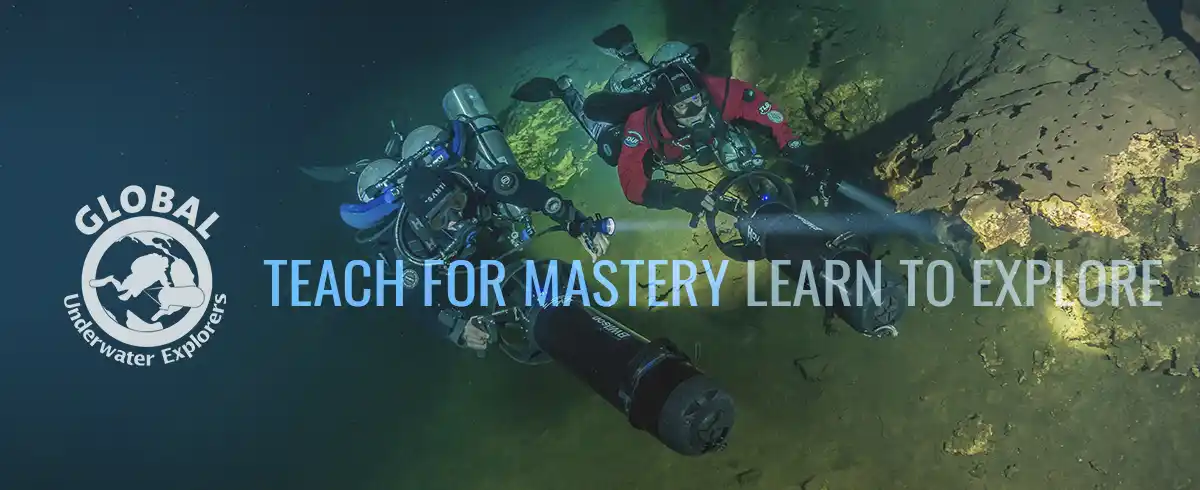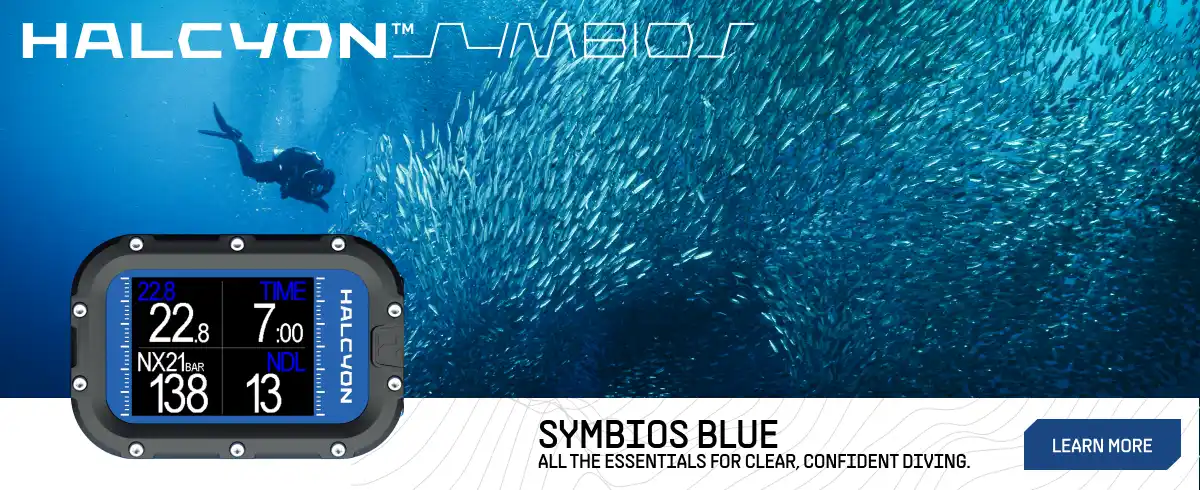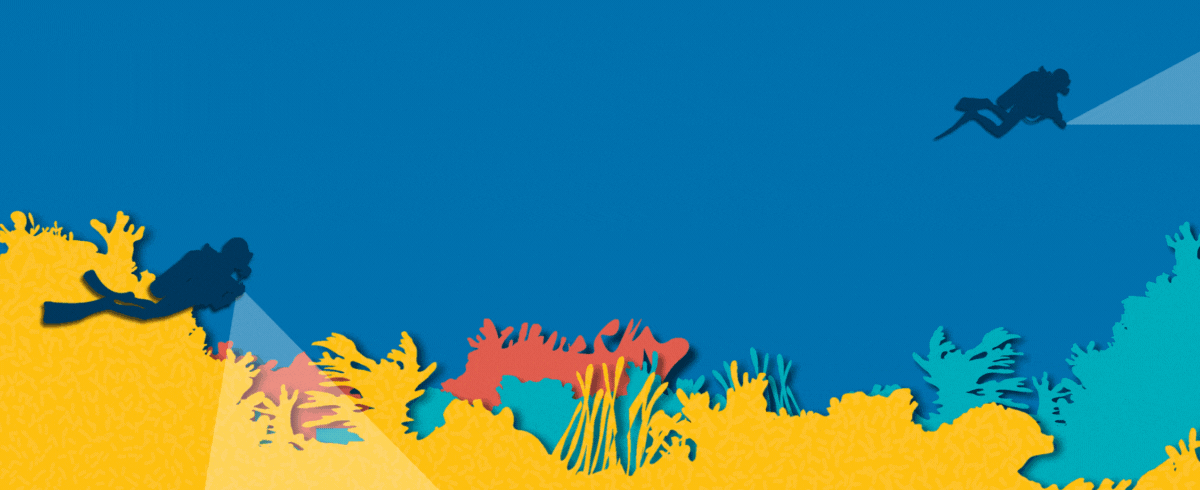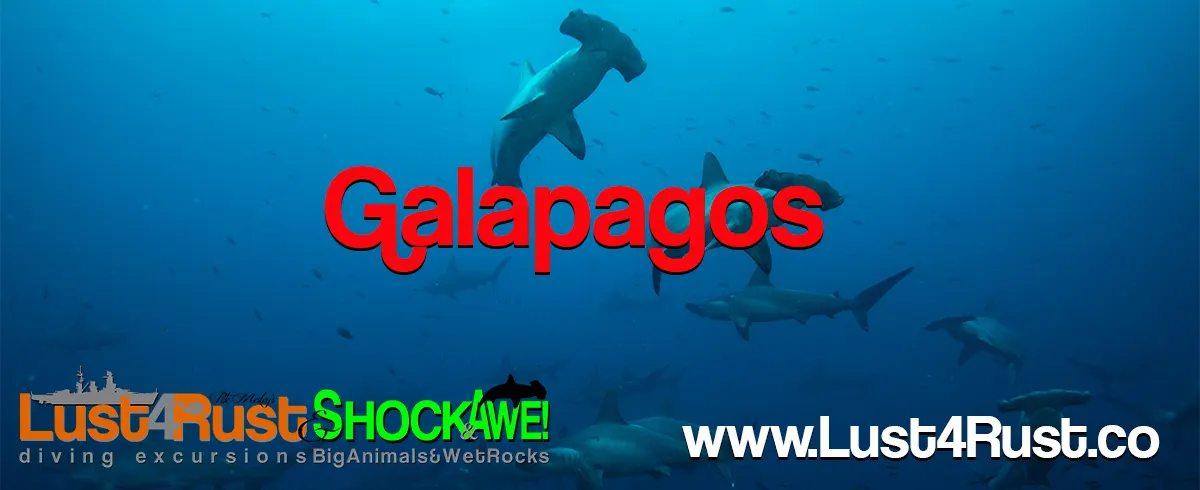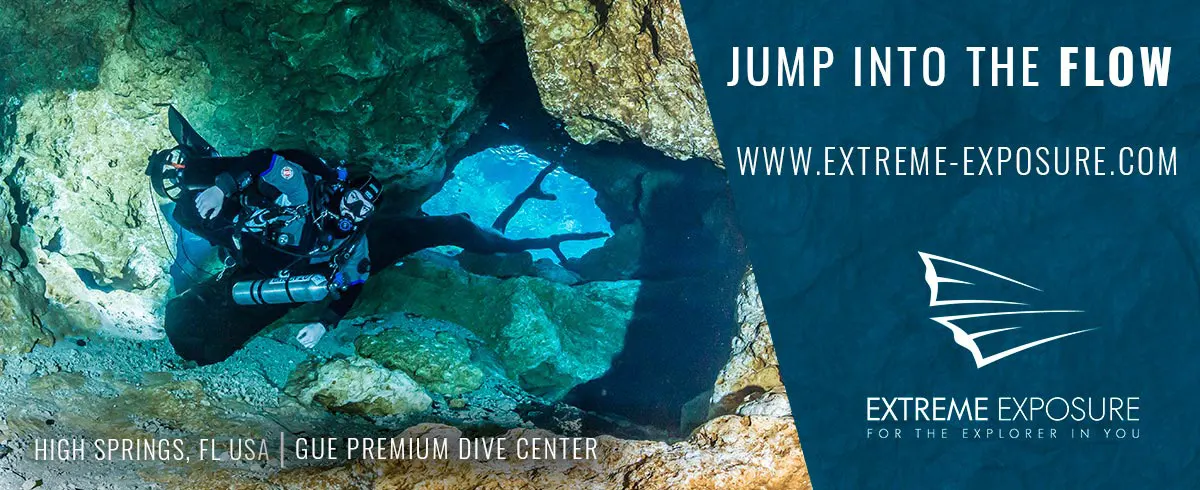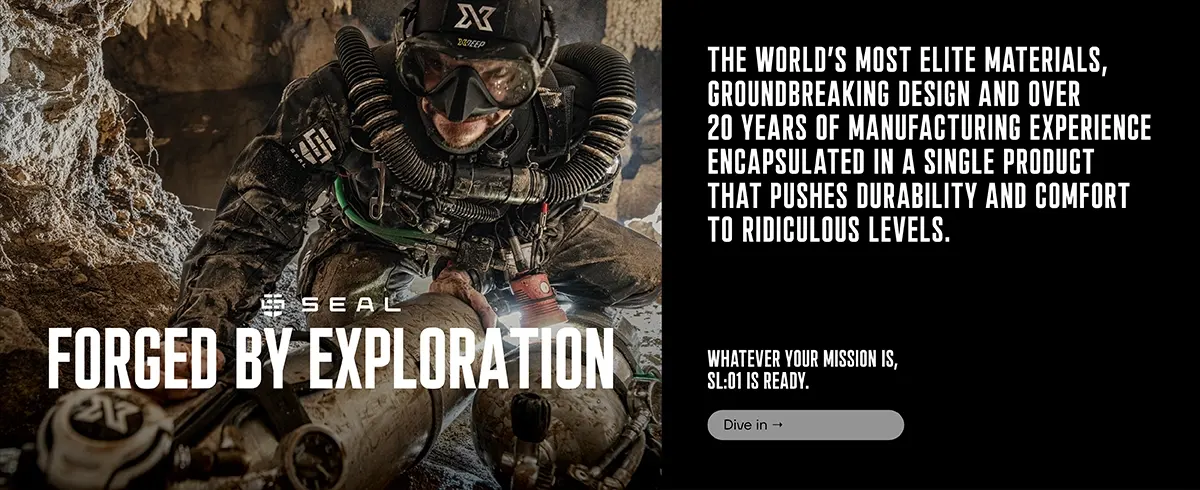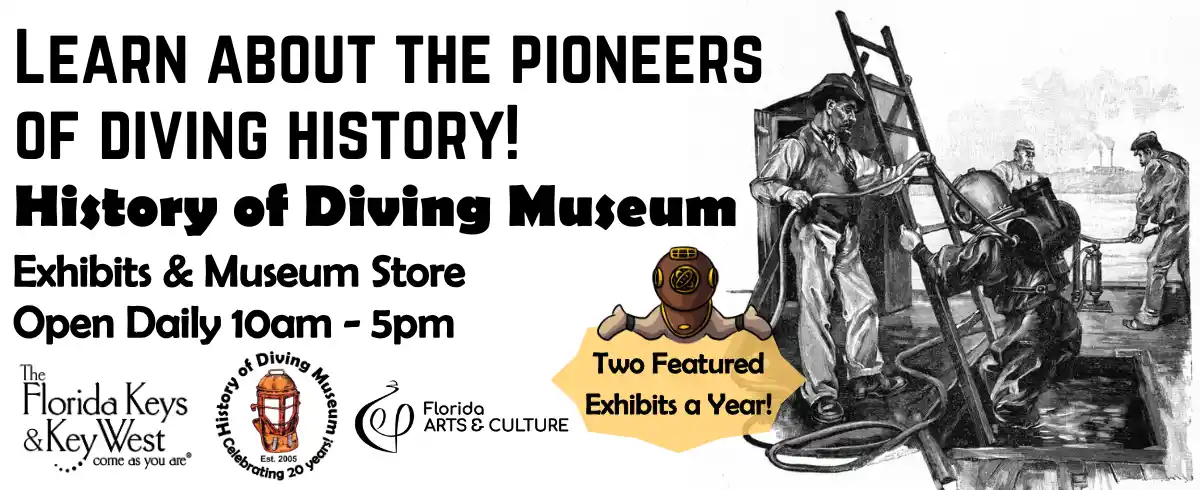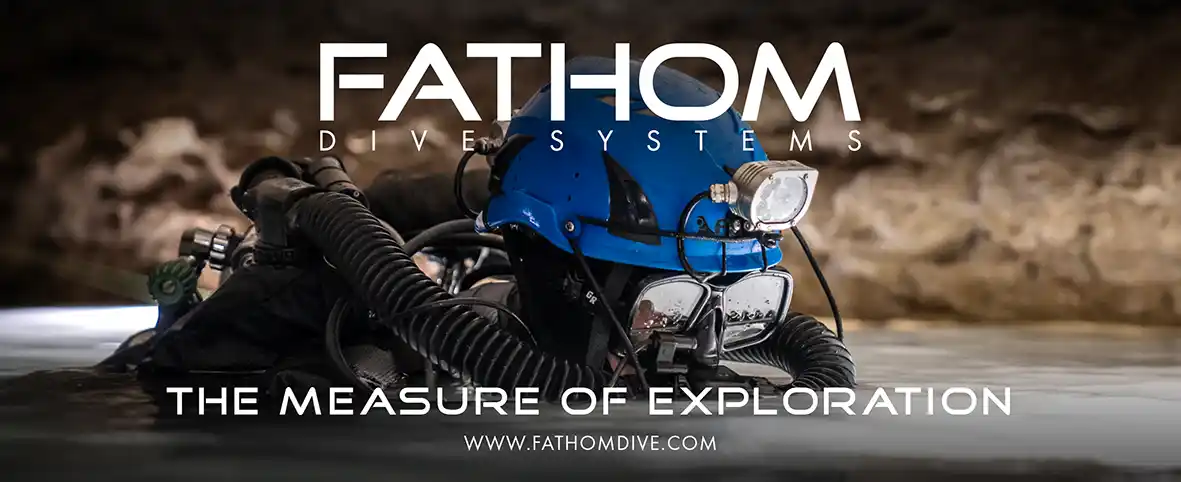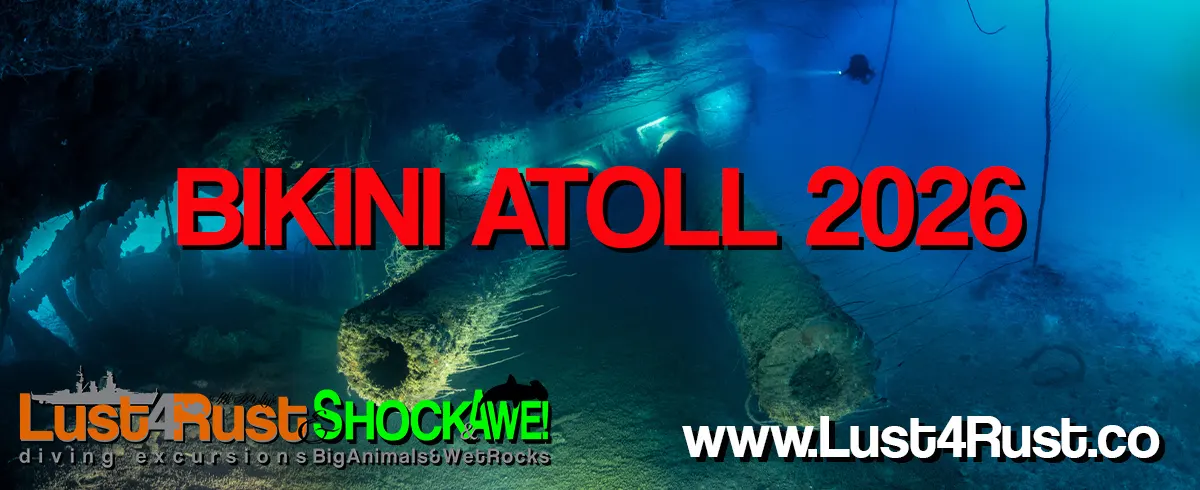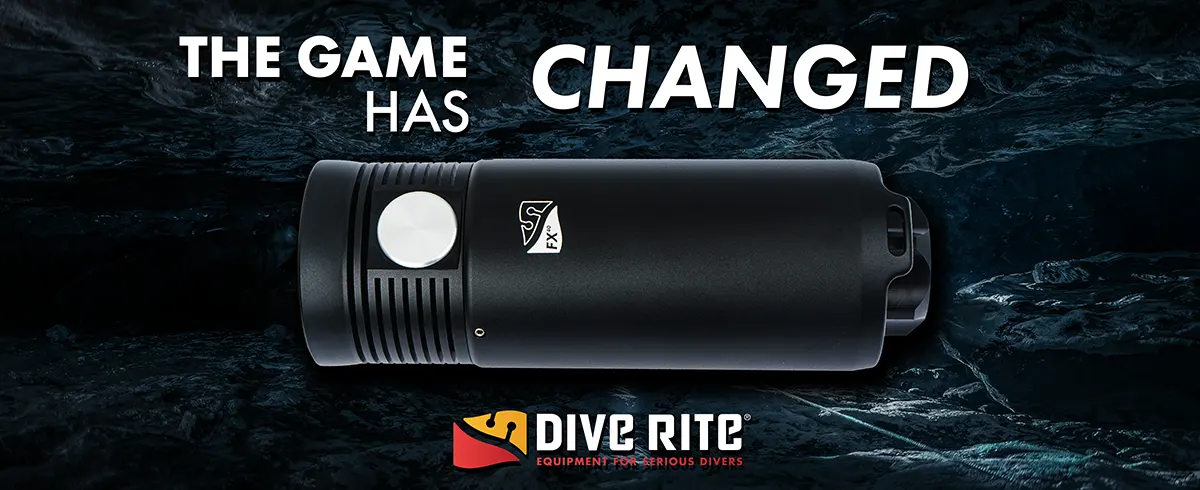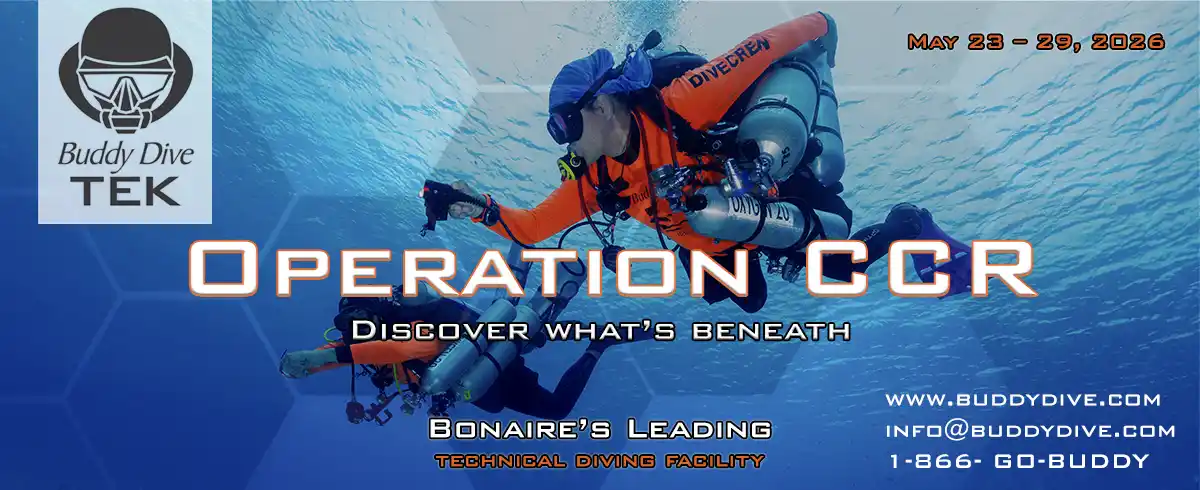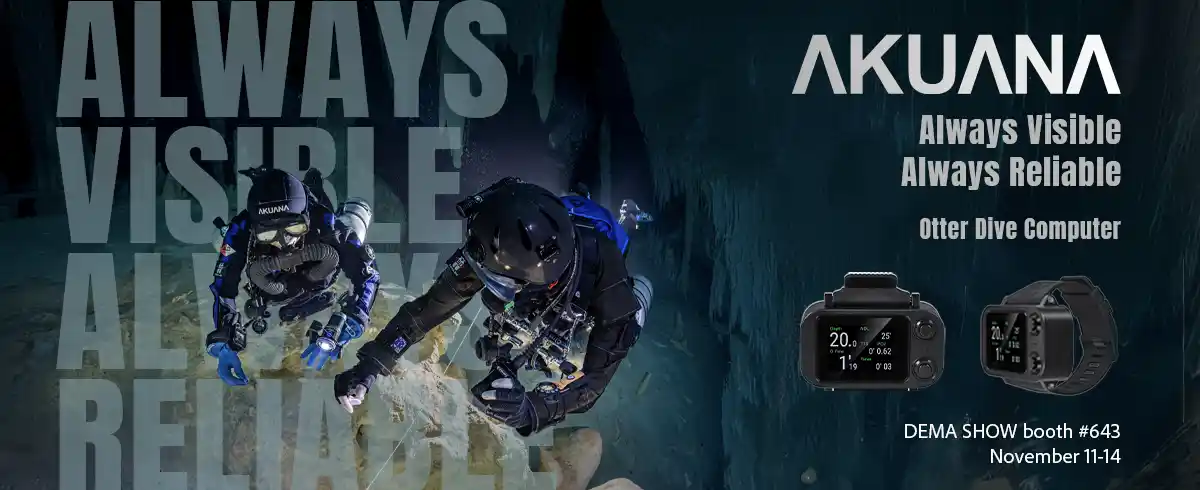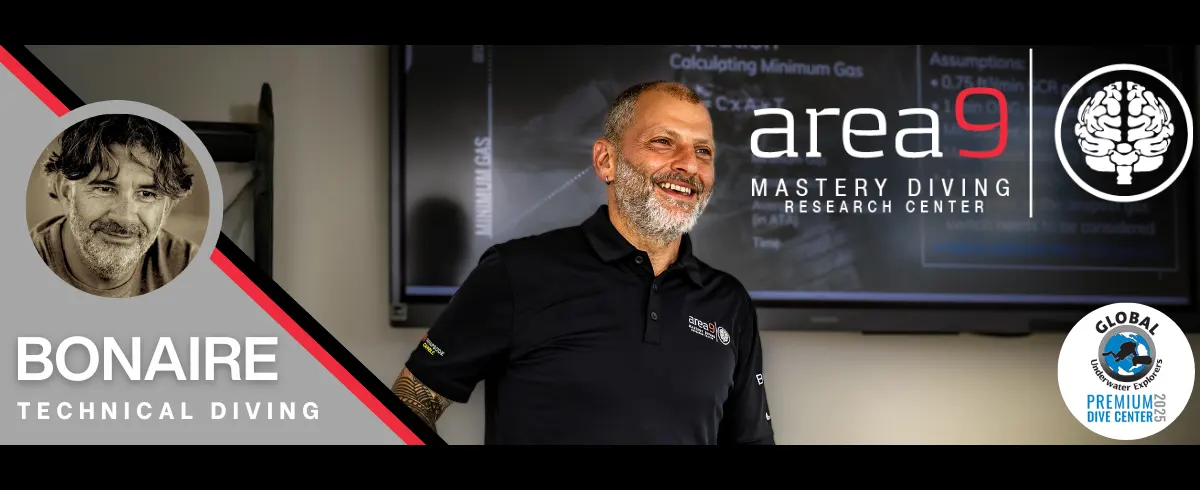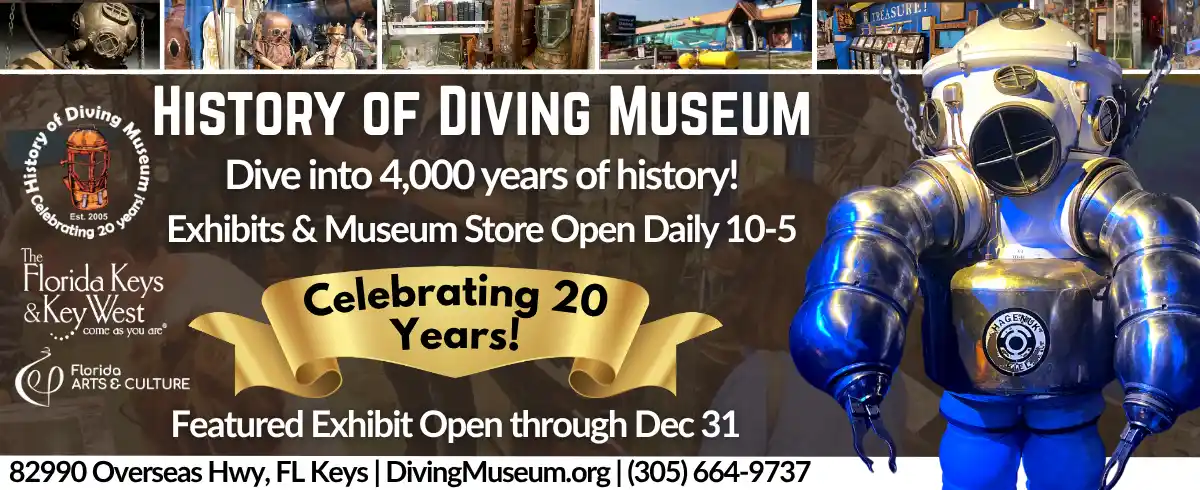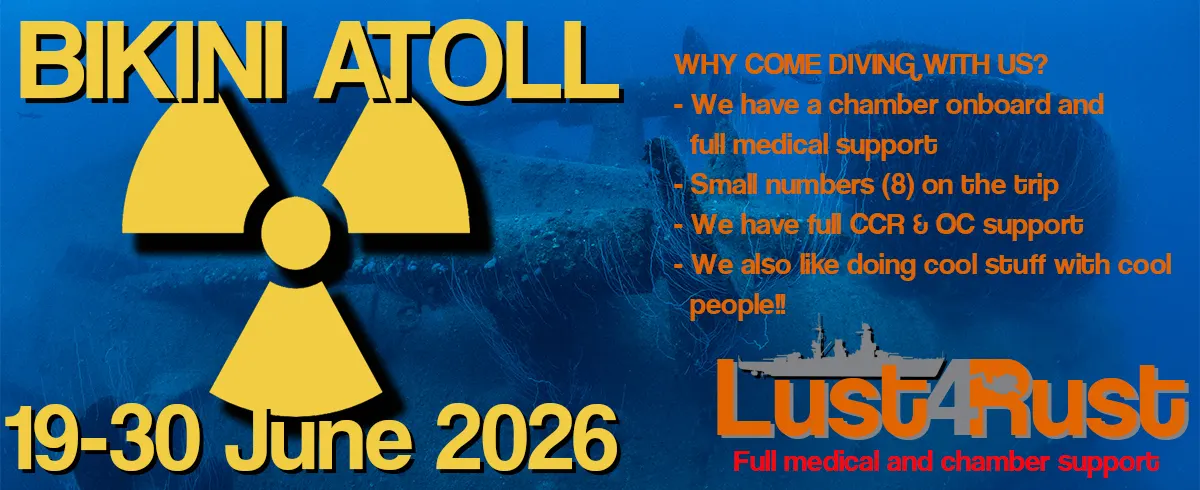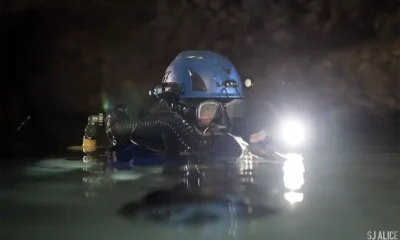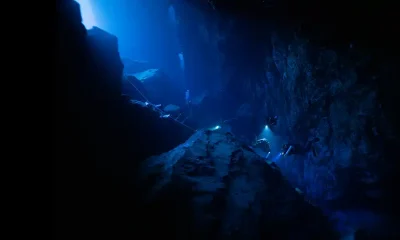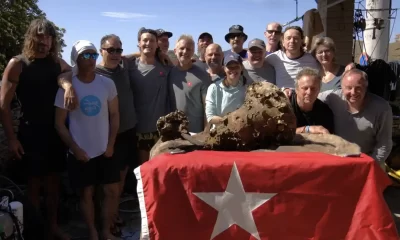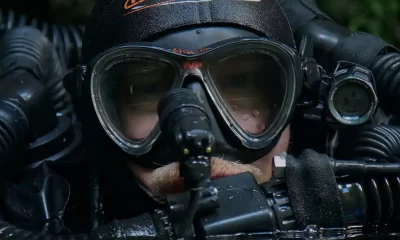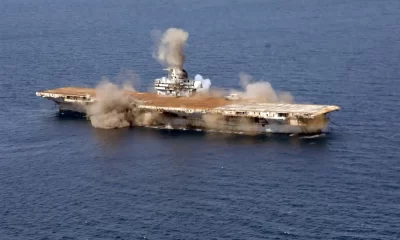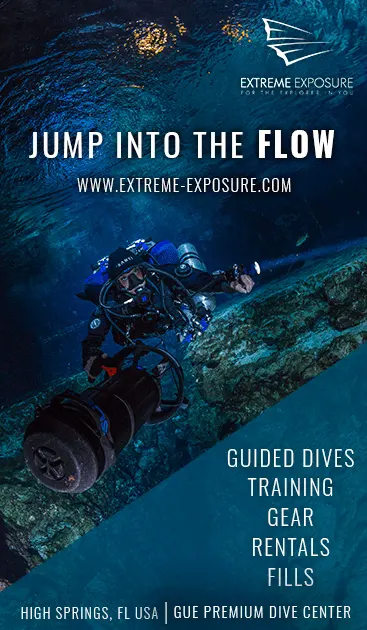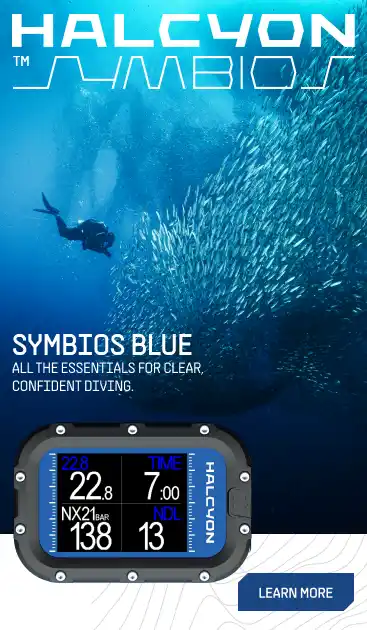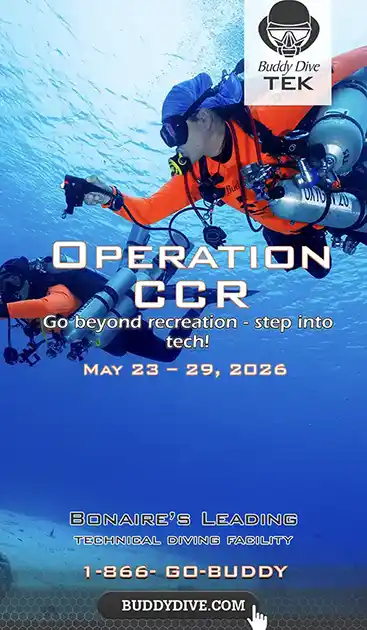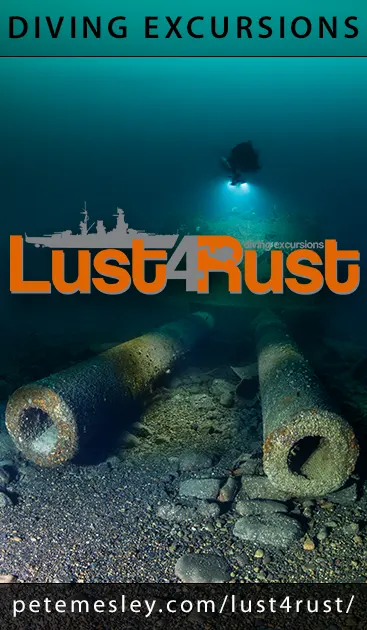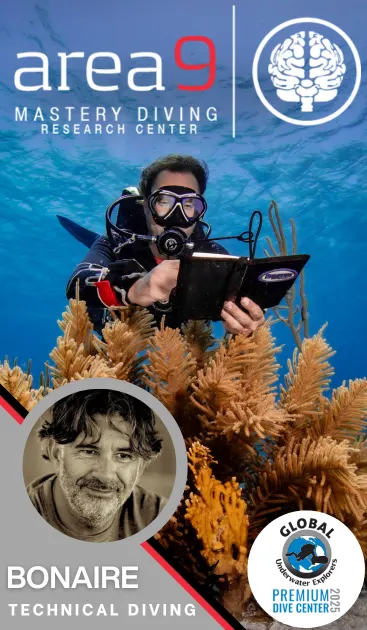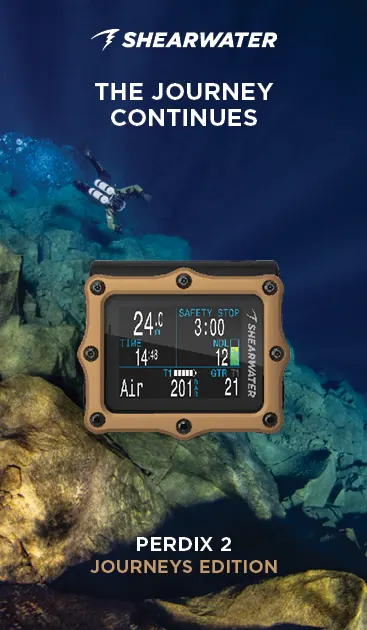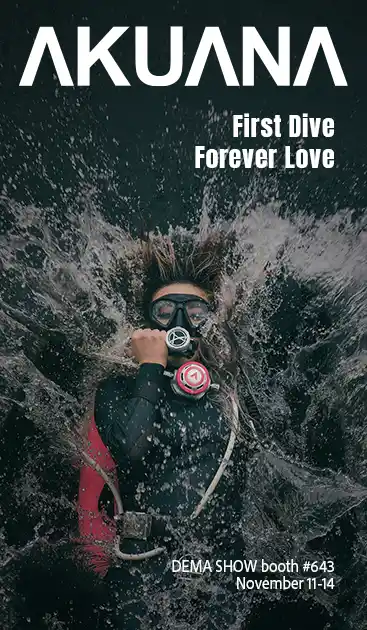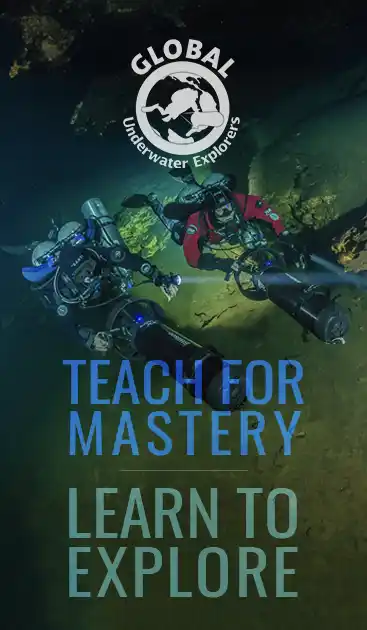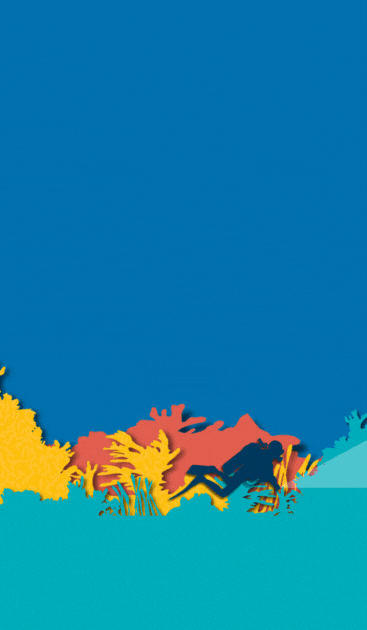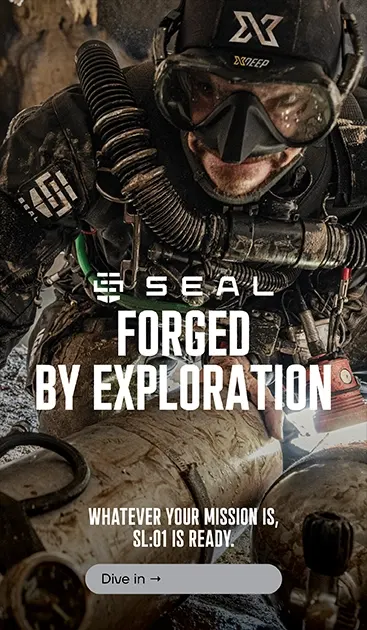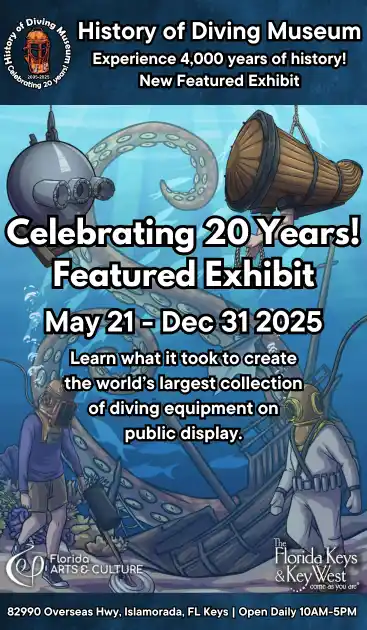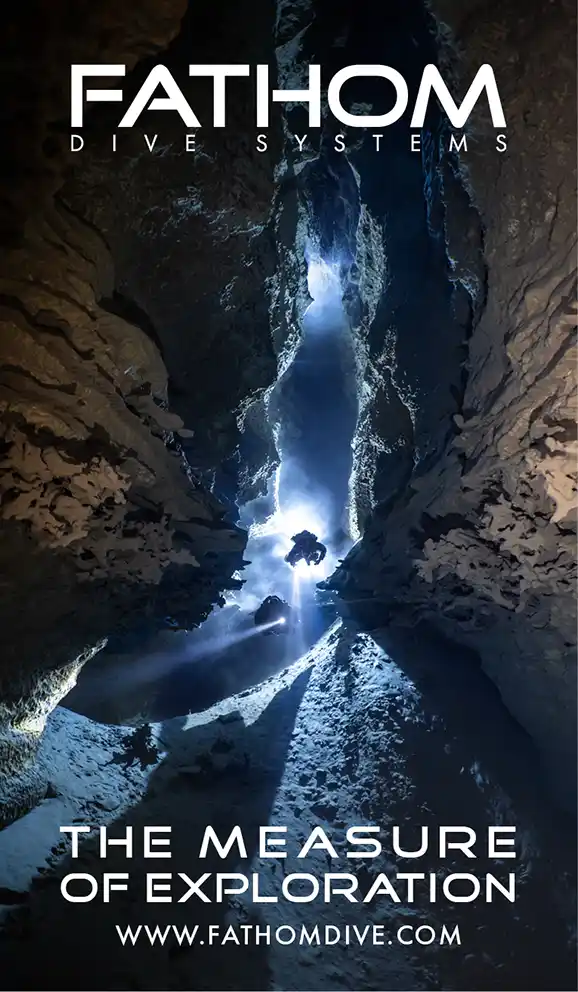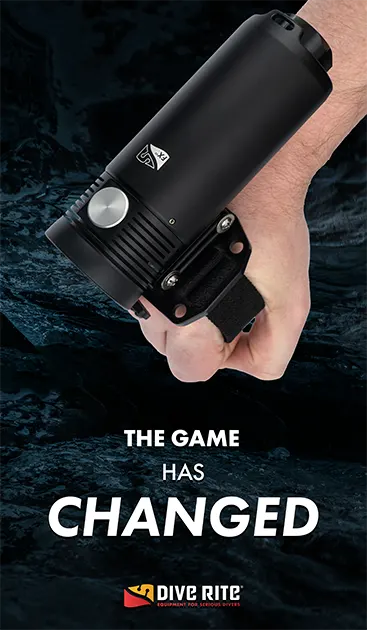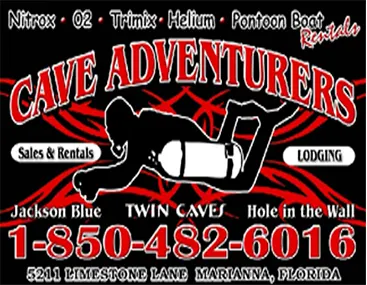Community
Under the Tutelage of Cave Explorer Parker Turner
Veteran cave and tech diver Alton Hall shares his story of learning to cave dive in the 1980s under the tutelage of cave explorer and pioneer Parker Turner, co-founder and leader of Woodville Karst Plain Project (WKPP), as the cave community adopted mixed gas technology. In the process, Hall introduces some of the who’s-who of early cave exploration.
Cave diving instruction in the 1980s
by Alton Hall. Images courtesy of the author unless noted.

In my office hangs a photograph of four divers floating in duck weed at Cheryl Sink. The image was captured 38 years ago. Three of the four are dead. I am the fourth.
The year was 1987. Ronald Reagan was in the Oval Office, The Bangles reached the Top 40, the market dropped 20%, and the rescue of baby Jessica from a Texas well was dominating the nightly news. Cave diving deaths were growing at an alarming rate. We needed a different approach to cave instruction.
At the time, I worked for the US Senate while teaching scuba part-time. Every three weeks or so, I conducted check-out dives in Destin, Florida. Fantasea Scuba provided the boat, tanks, and gear. Leaving Destin one Sunday afternoon, I stopped at Fantasea to pay the weekend invoice—an unpleasant task given that my Mississippi dive shop scraped by in a manner that only those who have worked in the industry can appreciate.
Fantasea manager Steve Powell was a British expatriate whom I often delighted in torturing by prompting students and customers to ask what part of Australia he hailed from. On this day, as I waited while he was calculating the damage, I spotted an National Association of Cave Diving (NACD) journal on his counter with a lead story that described the 1986 cave exploration of South Andros by Parker Turner, Dennis Williams, Roger Werner, and Mike Madden.

Within the journal, I discovered a whole new world. I didn’t even realize that a cave diving course existed. This was something I wanted to do. Immediately.
Meeting Parker
A “new” diver had moved to Destin. He was a cave diving instructor, explorer, reportedly independently wealthy, intelligent, and married to a stunning blonde named Penny. All turned out to be true—although Parker never explicitly discussed money but once told me “a person is never wealthy until he receives checks in the mail,” an observation I still recall when an unexpected windfall survives the postal service.
I contacted Parker through Steve and soon began and completed a cavern course. Apparently, Parker was a not-for-profit instructor; he did all he could to discourage potential students. Parker’s motivation was purely safety. I don’t know if Parker was the genesis of the approach, but the idea in the diving community—the different approach—was to discourage those who could be dissuaded, educate those who could not, and bring attention to the inherent risks of overhead diving by teaching the “influencers” cavern diving.

I became, essentially, a cave groupie. I assisted in every subsequent cavern course Parker taught. At the time, a wannabe cave diver had to literally talk one of the few instructors available into the honor of entering one of the most hostile environments, to quote a Parkerism, “on the planet.” The next step was to further commit by obtaining my own cave specific gear—at the time, this tech was scarce, custom made, difficult to obtain, and relatively expensive.
By that summer, I had left the Senate, run a short-lived presidential primary in southern states, and, by the Stupid Tuesday primary, was unemployed. Law school was almost a year away. I could have returned to the Senate. I chose, instead, to move to Destin, capitalize on a budding friendship with Parker, and spend every possible day cave diving.
At the time, most cave academics were taught during the cavern course. One evening, as we watched three jars of water containing mud, sand, and pebbles settle, Parker told me that anyone under his “tutelage” would be exposed to a variety of conditions and I should not expect to have fun. “Tutelage” was another Parkerism that I later had to look up:
“Tutelage: The function or role of a guardian. The state of being under a guardian or tutor.”
I found the concept both comforting and a source of pride. I realized my luck. What I didn’t realize was that my life was about to change forever.

Steve had graciously given me a minimum wage job at Fantasea during the slow season. I left politics to sweep the shop, teach the occasional open water course, and rebuild regulators. To this day, I worry about those unfortunate customers whose gear I serviced.
In preparation, I read the National Speleological Society Cave Diving Section (NSS-CDS) (NSS-CDS) cave diving manual, Blueprint for Survival, by Sheck Exley, and every other article I could find. The only reading Parker required was Zen and the Art of Motorcycle Maintenance. I had started the cave course final exam: an essay detailing why I wanted to be a cave diver. Like an annoying younger brother, I constantly pestered Parker to take me to NACD board meetings, NSS-CDS conventions, and any other cave related event.
Finally, Parker offered to loan me a set of double 72s “until you get your priorities straight and purchase your own.” He also obtained a backplate from its inventor, Greg Flanagan. I had dedicated regulators, reels, and backup lights. We loaded the gear and went to visit Bill Main; he promptly removed numerous items I had thought “essential”—or at least cool—and spent what seemed an inordinate amount of time adding and fitting webbing, d-rings, and buckles.
My First Cave Dives
My first cave dive was at Madison Blue Springs. En route, we stopped at Lamar English’s house where his father sold me my first canister light. A thing of beauty and craftsmanship, it had a Lucite handle which Parker carefully wrapped with cave line. Mr. English promised us that Lamar would meet us at the spring.

Lamar arrived as promised. Following an extended donning and checking of gear, the three of us began to traverse the steep slippery slope to the spring. My first doubles experience would have benefitted from today’s Park Service boardwalk.
In the water I felt, well, like a fish out of water. My gear was all tucked and hidden from me, not dangling in my face. The doubles felt as if a giant was pushing me towards the bottom. I struggled to achieve some semblance of trim as Parker and Lamar hovered motionless, placidly waiting.
Lamar, leading, ran the reel. I knew right then that I would never achieve his level of grace. I followed, with Parker presumably keeping a close watch from behind. The illumination of my first cave light was dazzling but my memory, vivid to this day, is a combination of adrenaline and addiction. I was overcome with enthusiasm and the stark beauty of this underground world. I was cave diving!
My log reads:
September 10, 1987
Cave #1
Parker Turner, Lamar English
Madison Blue Springs
Depth 25 m/81 ft
BT – 46 minutes, deco 14 minutes
First dive of cave course. Used new gear. Entered the Monkey Room, Banana Room, and Godzilla Room. BEAUTIFUL dive. Lots of tunnels and jumps. 25 m/81 ft ceiling in Godzilla Room. Mouth at 11 m/35 ft.
Without remark, Parker must have concluded that I was entirely too comfortable in the cave. He quickly remedied that. After an early dinner at the Stone Fox and refilling our tanks, we headed southeast to Little River. I likely chattered like an excited jaybird throughout the drive.
At Little River, Parker spent about thirty seconds discussing high flow, pull and glide, locating areas of still water, and other tips I promptly forgot. What followed was the most memorable snippet of a cave dive I retain today, excepting the first time I swam “over the ledge” at Numero Uno (aka Sally Ward).
Parker led, undoubtedly keeping track of my light. I struggled—and I mean struggled—to keep up. After about 300 m/1,000 ft I was exhausted, over-breathing my regulator and, had I the presence of mind to do so, I would have turned the dive. Parker rounded a corner and killed his light. The mental and physical exhaustion exacerbated by CO2 was too much. I flashed my light several times without response, turned, and headed “hell for leather” for the entrance.
My EDGE dive computer, connected like a brick to my submersible pressure gauge (SPG) hose attached to my wrist, surely indicated a decompression obligation. I did not notice and probably would not have cared. With the high flow aiding my hasty retreat, I question whether Parker could have stopped me. I recall increasingly positive buoyancy and flailing to exhaust the unfamiliar BCD. It was nighttime. I was shocked as I broke the surface. The EDGE was losing its electronic mind, flashing dire warnings of my impending doom.
Marshalling my remaining miniscule wits, I returned to depth where I found Parker grinning and also a bit perturbed. Frankly, I didn’t care. I was, in a word, pissed. Although Parker demonstrated pull and glide technique as we decompressed, I remained shaken. I was forever cured of inappropriate overconfidence.
My log reads in part:
I made it to the Serpentine Tunnel. The current was the worst. I could not keep up swimming against it. The worst part after finally catching my breath was controlling buoyancy in the cave zone. Probably disappointed Parker.
Parker didn’t reprimand—such was unnecessary. Confessing my multitude of mistakes was punishment enough and, in retrospect, an important lesson.
We spent the night at the Cadillac Motel where Parker suggested that we “sleep until we wake up” and then dive Peacock and Telford Springs. Parker often told me that “there was nothing like an honest tiredness after an exciting day.”
Among the Legends
Late the next morning, we met Wes Skiles at a local Waffle House. He and Parker gossiped about the cave community, and then Wes told me the story of the Telford Ghost. Parker had the coolest friends.

At Peacock, “We swam a 1,067 m/3,500 ft circuit from Peacock to Olsen—recalculated thirds, then to Pot Springs…I was nervous about not knowing where I was going”. We then proceeded to Telford, which I recorded as “challenging with small tunnels and lots of silt.”
Cave instruction, at the time, was not the structured course offered today. Although there were standards, overall, the course was essentially an apprenticeship. Bill Gavin explained to me that they were not teaching “cave students” but “cave explorers.” In practice, this meant that, if Parker was cave diving (with a few exceptions), I was with him. As a result, I was exposed to a variety of locations, people, and situations. It was the difference, as a wise friend recently explained, “between doing the same dive a thousand times and a thousand different dives.” Parker could have taught my entire course in Marianna, Florida, only two hours from Destin. He chose otherwise.

My seventh dive was at Little Dismal with Parker, Bill Gavin, Bill Main, and Lamar English. Also present but not diving was Tex Chalkley who described the “mousetrap” restriction and explained that he carried such a large knife in case he got trapped behind a “student.” It wasn’t a regimented training dive; it was the dive Parker was doing that day.
Parker’s favorite drills utilized a deck of waterproof flashcards with different scenarios such as “your SPG hose has just burst” (close right tank while isolating tanks). Occasionally Parker’s stacked and marked deck contained a scenario to which there was no standard response, testing the ability to think and act rationally. Parker also found humor in hiding within the cave from me. I learned to watch his light and bubble trail carefully.
Some double secret standard was used to evaluate my skill, or lack thereof. I spent a night in a Branford, Florida motel in a bed alone with my doubles. I doubt I would do that now, or even ten years after the event, but such was the respect I had for Parker. Still, why couldn’t I have fumbled my dive tables from my bright orange belly bag instead of closing the wrong tank valve?
A word about Parker: He literally changed the trajectory of my life. He was my instructor, mentor, and friend. Parker had a unique aura. People wanted to be part of his group. They were the cool kids.
Parker described his introduction to cave diving as a teenager as follows:
It was a slow day. Not a single customer had been in the dive shop all morning and I was bored to death. The door buzzed, and in walked an incredible character hefting a set of twin navy 90’s. He had short red hair and a little red beard with no mustache. Although he was quite short, he had a certain bearing and was obviously in great shape. I struggled with his twins and began to operate the cascade when the owner called out that I better start the compressor. After filling the customer’s strange “aluminum” tanks to unheard-of pressures, I struggled with them to his car. The owner just stood shaking his head as I asked him who that was. He walked off mumbling something about “crazy cave divers gonna blow up the damn shop!” It was Frank Martz.
A year later, I had completed a cave course under Frank and had joined the ranks of the “crazy cave divers.” The first time I ever heard of “Andros” was in conversation with Frank about Blue Hole no. 4. On Labor Day 1971, Frank Martz made his last cave dive in Blue Hole no. 4 and was never seen again.
In a dedication to Martz, Parker wrote, “He lit the way.”

Becoming A Cave Diver
Parker was originally from Shreveport, Louisiana and lived parts of his early years in Florida; Houston, Texas; and Mexico. He deserves credit for discovering new Mexican cave systems and new passages in existing ones. I think he was most proud of The Room of Tears located well off the main line in a cenote locally referred to as the Carwash for obvious reasons. He once told me that cave diving in Florida was akin to browsing an art gallery, whereas diving in Mexico and other locations with highly decorated cave systems was like watching an action movie.
The first time Parker took me to see the Room of Tears, he first issued several warnings to Penny of the dangers of el tigre and the importance of staying in the rented Volkswagen. She was soaked with sweat and mad as only a cave diver’s spouse can be when we surfaced. Penny joined us on future trips, but thereafter chose the hotel over lonely dirt roads.
Parker loved to paraphrase Nietzsche: “When you look into the abyss, the abyss also looks into you.” He had deep respect for academics, often to my annoyance. Once, after my certification, we were to meet a Professor from central Florida to dive at Hole in the Wall in Marianna. The Professor forgot his primary light, and Parker insisted I give him mine. I don’t recall the compromise or rationale, but we all made the dive and returned to Hasty’s Fish Camp. Worried that the Professor would get lost, Parker dictated that I join the Professor and we would meet at a small gas station near the interstate. I would switch vehicles and return with Parker to Destin.
Mr. Academia and I arrived to find the parking lot empty. This was prior to cell phones, so waiting was the only option. The problem: After a ten-minute wait, Mr. Academia “absolutely had to leave now.” He was adamant. My dive gear, wallet, and all of my belongings were in Parker’s truck. The pay phone had helpfully been stripped of its handset; the store was closed. I was soon alone. Three hours later, a chagrined Parker returned.

Academics is overrated. That said, when I was considering forgoing law school to remain in Destin, Parker’s only remark was, “You’re going to decline the best maritime law school on the planet so you can be a dumbass broke scuba instructor the rest of your life?” Steve Powell put the issue into more concrete terms: “If you want to spend your life worrying each month if you will earn enough for rent and pot, stay. Take the scholarship and dive when, where, and how you like.”
Throughout law school, I continued to cave dive at least monthly and always spent most of Christmas break in an empty dormitory at Vortex Springs, perhaps the most frequented cave in north Florida. The manager, Joe Van Wagoner, was a friend until his death. Joe had little interest in cavern or cave diving despite having installed most of the cave’s PVC pipe. Parker practically forced Joe to learn the rudimentary skills and procedures; this culminated in a dive in Jackson Blue during which Joe experienced a complete drysuit failure. He never returned to cave diving.

By December 1989, I received my first Wakulla Award for “completion of 100 or more safe cave dives.” None were twenty-minute forays just past the cavern zone. Parker and I continued to dive together for the next few years, traveling to Mexico multiple times, the Bahamas, and elsewhere. I have memories of fighting biting flies—whose viciousness cannot be overstated—while climbing in a well just outside Chankanaab State Park in Cozumel. We dove Mermaids together on Grand Bahama, Parker carrying a stalagmite for most of the dive as he wasn’t weighted for his dry suit, aluminum tanks, and shallow water.
Parker “respected” sharks and would rarely dive salt water. After finally convincing him to do so, we arrived one morning at the dive shop after spending most of the night in a Bahamian cave with the shop manager. In order to dive the reef, we were required to demonstrate basic skills in a tank. Parker refused on “principle,” but I am certain purposeful avoidance was a factor.
Lamar English once told me that he, Bill Gavin, Bill Main, and Parker only taught to the maximum and never needed (or even referenced) minimum standards. Many of their teaching techniques would be frowned upon today. Students, at the time, were generally over-prepared. For example, Lamar described spending over a year laying and then following the cave line in the Aucilla River in doubles practicing technique prior to taking a cave course.
As an aside, Lamar’s introduction to cave diving should and may soon be the subject of a Hollywood movie. It is his story to tell, but one not to be missed.
Other entries from my training log:
Sullivan Sink – Dive 6
Set up dive for Bill Gavin and Bill Main. Downstream past the upstream split where we left stage bottles. Dark and silty.
Dive 11
Cheryl Sink
Parker towed me with his scooter to the black abyss dropping to 67 m/220 ft. I waited while he looked for a lost stage tank.
Sullivan Sink
Downstream through the restriction at 60 m/200 ft to a max depth of 66 m/217 ft. Then back to junction and upstream apx. 300 m/1,000 ft. The blackness of the walls seemed to increase the effects of narcosis. At apx. 58 m/190 ft I began to see spots. However, after stopping and resting at 200 ft my mind cleared considerably.
These were air dives. I can imagine today’s technical divers rolling their eyes. Air was easily obtained, and decompression was simple to calculate and fairly predictable. If reliable and obtainable rebreathers had been feasible, we would have likely utilized such. We knew air was not the optimum gas.

To Trimix is Divine
A 1995 Miami Times article referred to Parker as “trimix’s founding father.” A bit of hyperbole perhaps. Dr. Christopher Werner comprehensively chronicled earlier “recreational” use of mixed gas. The fact remains that Parker was a pioneer and shared his knowledge at a time when “secrets” were abundant within the competitive cave diving world. Dr. Bill Hamilton created increasingly effective tables, and we began to move away from air, partial pressure blending trimix (without a booster) in a storage unit.
Lamar recalls the first dive they made on trimix in early 1987. It followed a dive in which a member of the group lost consciousness several times returning on air through the downstream passage of Numero Uno. Bill McFaden’s 1988 death while mapping Little Dismal further confirmed the limits and folly of deep air.
McFaden was a talented map maker. Only a few weeks prior to McFaden’s death, Steve Powell arranged for several of us to purchase drysuits which were not easily available in north Florida at the time. We all (except Steve) received orange and black suits identical to Parker’s. I often wonder if Bill McFaden’s inexperience in a drysuit contributed to his death. My log dated May 8, 1988 reads:
Vortex Springs with Steve Powell.
1st dive with DUI drysuit. Deco on the line outside the cavern and in the talk box. Buoyancy was a bit tricky. Apparently constant volume valve is anything but.
P-valves were not yet commercially available. I have photographs of Steve that day in his adult diapers.
Parker’s arrival in north Florida in the late 1980s was, in part, the impetus that renewed interest in exploring Florida’s underground aquifer. In late 1987, Turner, Main, English, and Gavin conceived what was to evolve into the Woodville Karst Plain Project (“WKPP”) with an initial focus on connecting the area’s cave systems. The next several months were devoted to linking Sullivan and Cheryl Sink.
I was fortunate to be taking my cave course during the Cheryl-Sullivan connection project. Safety bottles had to be staged, an inverted stock tank placed in Cheryl for a slightly more comfortable decompression (during which we read novels and played checkers), gas mixed, and equipment refined— and, in some cases, invented. Parker almost always found a way to include me.
The connection was deep by standards of the day (73 m/240 ft) and the cave was particularly dark and, for me, spooky.
The world record traverse by Gavin, Main, English, and Turner occurred in early 1988. At the time, it made the 12.5+ km/41,000+ ft cave system the longest in the world.
The American record stood until mid-1999 when Jarrod Jablonski, George Irvine (a former cavern student of mine), and Ted Cole traversed 4.3 km/14,000 ft over two counties connecting Big Dismal Sink (Leon County) with Cheryl (Wakulla County). That such was accomplished on open circuit scuba makes this feat singular.
My cave course and association with Parker introduced me to the best of the best. Steve Gerrard came into my life as a result of Parker’s belief that I would benefit from conducting a few training dives with an instructor that he respected. I could earn NSS-CDS certification in addition to NACD. A delivery man at the time, Steve’s enthusiasm was such that a 3:00 a.m. knock on his door seeking a dive buddy was always successful.

A log entry from my second dive with Steve: “Entered at Telford. Made two gaps. Went from last gap to entrance without lights. Confidence builder.”
Steve and I continued to dive together for several years. We spent weeks “playing” in Mexico, including being arrested for driving the wrong way on a “one way” dirt road in Playa del Carmen. We found cenotes by climbing power poles and then following a compass to the dark green spots. We got to annoy the monkeys and, on occasion, literally go where none had before. Through Steve Gerrard, I met Pat Watson who became a regular dive buddy and was the impetus for our survey and map of Twin Caves.
My association with Parker had perks outside of cave diving. Similarly, Bill Hamilton wrote:
My relationship with Parker exposed me as credible to some of the best in the industry, many of whom remain friends. That credibility has not only served my professional career but more importantly introduced me to and created friendships with arguably the most influential individuals involved in diving today. Some are clients but all are friends. I cannot think of a more enriching experience. The tutelage of Parker Turner was an invaluable gift for which I will always be thankful.

Celebrated decompression physiologist Dr. RW Bill Hamilton. Image courtesy of Joel Silverstein.
The first time I met Dr. Hamilton personally, I was trying to retain him as an expert in a commercial diving lawsuit. He told me then, and later wrote in memoriam, “When a stranger calls me with a request, nothing he can say about his skill level does as much good as to tell me he was trained by Parker Turner.”
Cave diving has enriched me as a diver, attorney, and person. It is a defining endeavor. I agree with Dr. Hamilton and believe that the tutelage of Parker Turner was the magic key to a lifelong obsession and unique legal career.
Remembering Parker
Parker’s dry sense of humor, initially a constant source of anxiety, later became an endearing quality. He once soothed my concerns over leaving our non-diving companions at a casino while we spent the evening exploring Bahamian caves. He explained that the only money available to the girls were several rolls of nickels for the slot machines. He figured our financial risk was no greater than $5 an hour.
Parker was blessed with natural intelligence but, for good or bad, he never (by either choice or opportunity) pursued traditional, formal education—which isn’t to say that he didn’t read, research, learn, and retain even the most insignificant aspect of diving theory, physics, and physiology. His type-A personality required such and would, at times, create an intense focus. This occasionally led to absurd results such as the time he shaved off his eyebrows prior to a big dive. He could be intolerant—especially with regard to safety, but also skills or other information he had tried to impart. However, he managed to always devise a way to make his point.
Although I don’t recall Parker ever participating, “sneak diving” was common at the time: covering the truck with camo netting at Little Dismal, hiding in weeds in a jon boat at Jackson Blue (until we realized that we could simply cut a link out of the chain and add our own lock), dropping off gear at night, and parking across the road to get in an alligator infested ditch (with Doug Hand’s mother) to experience the grandiosity of Numero Uno. The same process at Indian—fewer reptiles, but with spooky totems standing guard. The list is partial, but the procedure repeated frequently across the area. The goal was to dive everything north Florida had to offer.
Parker had tremendous respect for the inherent dangers of cave diving. He never lost that respect and had very little tolerance for those who did. Parker often warned me that similar mistakes would “be my dead ass.” It is sadly ironic that he may be the only individual in history—or, as he would say, to ever set foot “on the planet”—whose death in a cave cannot be attributed to violating one of the absolute rules for survival.
On November 17, 1991, an underwater avalanche of silt tumbled into the cave entrance of Indian Springs. Silt buried the permanent line running through the cave reducing visibility to zero. Bill Gavin was able to escape, but Parker fell a few feet short of reaching a safety bottle inside the cavern. Parker was 39 years old.
Personally, Parker’s death in a cave had a profound effect. My world shifted, and I suspect I wasn’t alone. Parker’s death was a blow, both emotionally and psychologically. The loss of this giant in the cave diving world was not fair, not possible—unexpected but undeniable.
Parker and Penny had one child, Amelia, born in 1986. Once, while driving to Tallahassee, Parker observed that the pine trees looked like “prehistoric bottle washers” and then continued that the birth pheromones he experienced during Amelia’s delivery “forever altered” his brain. I never understood the pine tree/birth experience connection, but such was typical of Parker’s constant stream of consciousness. Amelia currently resides in Texas with her husband and son, named for his grandfather.
Parker’s regard for the cave environment was total. I recall showing him some turtle bones Steve Powell and I recovered from a cave system. His look of disapproval was such that our next cave dive was to replace the bones which today are still present.

Forming the WKPP
Parker was deeply concerned with the preservation of North Florida’s cave system, in particular that area encompassing Tallahassee and a large surrounding area known as the Woodville Karst Plain. The Woodville Karst Plain Project, initially only a concept, was incorporated as a 501(c)(3) non-profit with Parker at its helm. This new credibility opened the door to many cave systems previously accessible only in the dark of night utilizing as much stealth as possible.
The WKPP is now comprised of a multitude of dedicated volunteers who have set almost every cave diving record in history. The WKPP spawned the development of today’s greats in the cave diving world as well as entities such as Halcyon which capitalized on the era’s technological advances to become the world’s leader in the production of “technical dive gear.”
The WKPP gave rise to Doing it Right (“DIR”) diving which, in the mid-1990s, contributed to Jarrod Jablonski’s creation of Global Underwater Explorers (GUE), perhaps the most robust dive training available then and now. My cave diving course forever changed the trajectory of my life. My first GUE Fundamentals class, taught by David Rhea, forever changed my diving style and enhanced my modest ability unlike any other of the dozens of courses I have participated in.

In sum, the WKPP was the genesis of organized, high-quality training utilizing custom manufactured gear under the “tutelage” of the best in the business. The dive world took notice and—with the advent of the internet, websites, forums, and the ability to transmit complicated information quickly and accurately—“technical diving” became less a mentorship (what Bill Gavin described as “student explorers”) into a world in which we were not seen (for the most part) as the lunatic fringe.
This was most apparent in the creation of Michael Menduno’s high-quality aquaCORPS Journal which transcended the limited circulation of the NACD and NSS-CDS journals into something accessible to anyone interested. aquaCorps was the first and the preeminent “technical diving” publication devoted to activities then considered taboo by the mainstream dive industry.

The original WKPP explorers were joined by: Jarrod Jablonski (who, on a trip from High Springs, Florida, to Marianna, I found so engaging that we drove almost to Atlanta before realizing that I had missed the I-10 exit); Sherwood Schile (who was a Destin, Florida, native and an occasional dive buddy); Doug Hand (perhaps my most frequent dive buddy who worked with me to install a gate in the grate in Vortex Springs cave); Steve Irving (who calmly accompanied me during a cave exit I had begun to doubt I would survive), Steve Berman; Todd Kincaid; and Casey McKinley—all exceptional divers and the best of people.
George Irvine, perhaps one of the most controversial figures in cave diving, went on to direct the WKPP and spearhead exploration in Wakulla Springs and other cave systems when Bill Gavin, who assumed Parker’s role, retired to sail across the world. I met George at Vortex Springs for the first day of his cavern course. He later introduced me to the world of open water deep air diving. We traveled to Florida, Mexico, the Bahamas, and other places offering deep wrecks and walls. The irony being that George—through his association with Parker, Jarrod, and others involved in the WKPP—later became diving’s most vocal critic of deep air diving. We worked together through George’s voice and litigation to change the maximum PPO2 standards that existed at the time.

Although not the only individuals promoting DIR principles, George’s aggressive personality—for which I make no apologies—coupled with the extremely personable, calm, deliberate demeanor of Jarrod allowed the message to survive the messenger. Such changed the industry for the better.
By 1997, the WKPP was routinely breaking world penetration records. Records continued to fall as technology and standards progressed. Parker, Bill Main, Bill Gavin, and Lamar English set the stage, improving cave diving forever and proving that DIR—a holistic approach to diving utilizing optimal and streamlined equipment configurations in a team approach—was, in fact, the right way. The core of DIR was the Hogarthian system named for Bill Hogarth Main that utilized only what was necessary in a standardized low drag diving rig.
WKPP’s work continues today under the excellent guidance of Casey McKinlay. WKPP’s contributions to cave exploration are unsurpassed “on the planet.”
To be clear, others were breaking new ground, exploring new caves and establishing unprecedented depths on open circuit scuba. My failure to recount the contributions of people like Sheck Exley is simply a function of those I was diving with at the time. (Although Pat Watson and I took down a “deep” course of his own design from Sheck.)

Sadly, Bill Gavin, a student of Tex Chalkley, recently passed away. I still have a Tekna scooter modified by Bill and think of him often. He was an amazingly talented individual both in the water and in his engineering lab. He continued to push the frontiers following the deaths of Bill McFaden (1988), Parker (1991), and Sherwood Schile (1992). Each death affected him deeply but, in the end, he was an explorer at heart.
Parker Turner was the epitome of unconsciously “paying it forward,” a trait I have redoubled my efforts to mimic over the last few years as I realize my mortality. Parker used to say, “We do this because they will not let us be astronauts.”
Given the generation of today’s technical divers, I have no doubt that the industry, while never destined (or desired) to be mainstream, is in good hands. Of this, Parker and those of his era were the provenance. They say you always remember the name of your open water instructor. I do, but I don’t remember him. Parker, however, I think of weekly after almost 40 years. Our history as divers is richer for his influence.

Parker in the habi-trough decompressing at Cheryl Sink. Courtesy of the WKPP archives.
With regard to that framed office photograph, the only difference between the four of us was the roulette, Russian or otherwise, of chance. When I pause and reflect on forty years of advancement since that time and all that was achieved by Parker, et al., never is the phrase “standing on the shoulders of giants” more applicable. The lesson, analogous to life in general, which embodies Parker and those he touched is as true today as it was in the 1980s: Even if unattainable, we should always strive for excellence.
DIVE DEEPER
aquaCORPS: In Tribute—Parker Turner: An Exemplary Cave Diver by RW Bill Hamilton
InDEPTH: The Accident Report from Indian Springs by Bill Gavin (1991)
InDEPTH: The First Helium-based Mix Dives Conducted by Pre-Tech Explorers (1967-1988) by Dr. Christopher Werner
InDEPTH: The Early Days of Technical Trimix Diving by RW Bill Hamilton and Michael Menduno
InDEPTH: GUE’s 25th Anniversary Timeline

Alton J. Hall, Jr. provides expert services in diving, vessel operations and maritime litigation through his firm Delise & Hall. His background includes work as a dive store owner, scuba instructor, deckhand and Divemaster on dive and fishing vessels. He has practiced maritime law for over 35 years.
Mr. Hall is an active diver having received his initial scuba certification in 1980 and has been a PADI open water Scuba instructor since 1984, with a Master Scuba Diver Trainer rating having provided instruction on every certification level of personal recreational diving including numerous specialties. He is a NACD cavern diving instructor, a cave diver through NACD, GUE, NSS-CDS, PSAI, IANTD and a recipient of the Wakulla award.
Mr. Hall holds additional technical diving and other certifications through IANTD, TDI, CMAS, GUE and other related organizations and agencies. He is well versed in commercial diving and has vast and current experience with rebreathers, mixed-gas diving, deep diving, sidemount diving, drysuit, public safety, rescue, cave exploration and wreck penetration.


